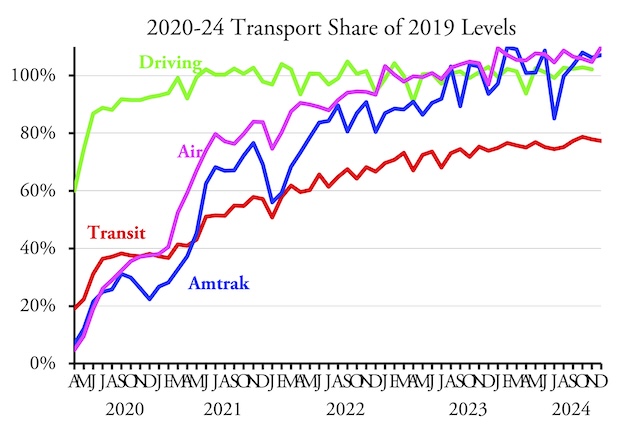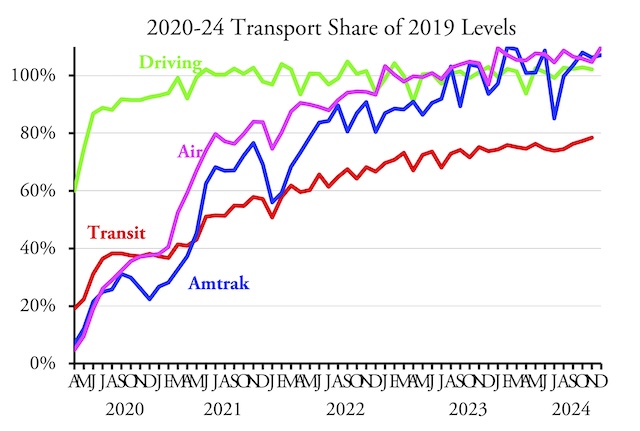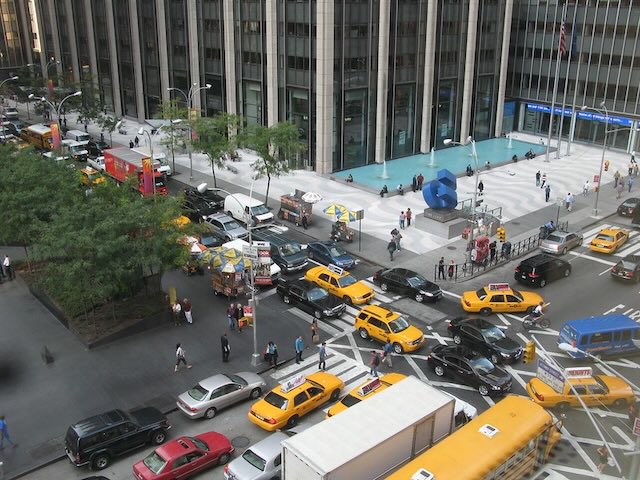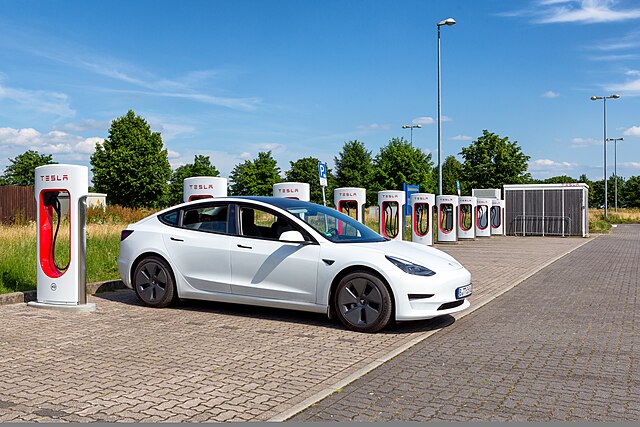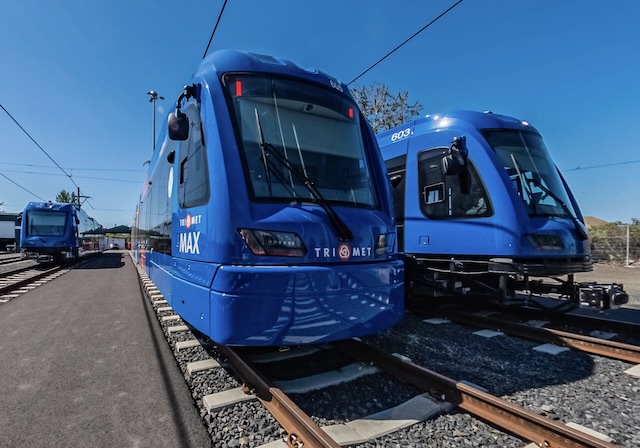Transit carried 77.3 percent as many riders in December of 2024 as the same month in 2019, according to preliminary data released late last week by the Federal Transit Administration. That’s down from 78.4 percent in November. Ridership for calendar year 2024 ended up being 76.5 percent of 2019.
Highway data will be added as soon as it is available. For a discussion of Amtrak and airline data, see this post from last week.
Because monthly numbers are preliminary and FTA updates prior months with each new release, I went through and corrected transit numbers for previous months in the above chart. I counted only 96.55 percent of February 2024 riders as that month had one more day than February 2019. As corrected, transit reached a peak, relative to pre-pandemic levels, of 78.7 percent in October, and dropped in both November and December. Continue reading

